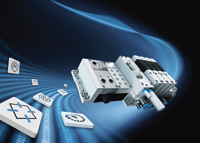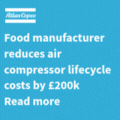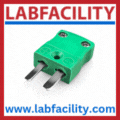
Posted to News on 21st May 2018, 00:00
Skilled workers are the vital ingredients for Industry 4.0
Andy MacPherson of Festo looks at what manufacturers can do to secure a suitably skilled workforce for the future as well as examining what technological advances are now available to help food processors start their journey towards the smart factory.

There is a strong desire in the food manufacturing and processing sector to embrace automation and the advantages of Industry 4.0 enabled technology. Two key drivers are the looming skills shortage, particularly for manual tasks, and the constant pressure to produce high quality, reliable and healthy foods with total traceability.
Food and drink is the largest manufacturing sector in the UK, accounting for 16% of total manufacturing turnover and contributing over £28.2 billion to the UK economy. It employs 420,000 people and is predicted to need almost 110,000 new recruits by 2022. However, fewer people are being attracted into the industry and experienced workers are leaving. Some industry commentators report that the adoption of Industry 4.0 and digitalisation means we no longer need to invest in people skills because machines will do everything.
This is nonsense: the human operator is and will remain the key element of modern food production, only the tasks will change. For example, pressurised trouble shooting will be reduced by improved condition monitoring and intelligence led preventative maintenance. Already though there is a shortage of multi-skilled engineers to bridge the skillsets between automation, networks and IT to create, install and develop these smart maintenance apps.
The increase in automation and the need to be more agile and flexible in meeting customer expectations is exacerbating the challenges of training and retaining employees with relevant skills. Defining what skills are likely to be required is a big challenge. This is further complicated as there is diversity across the supply chain and the adoption of Industry 4.0 principles is at very early and differing stages. In the agricultural community, for instance, manual working continues to prevail as there is a barrier to investing in fully automated solutions when demand is unpredictable and people are more adaptable than machines in many scenarios. Pilot applications are proving automation can take over more and more tasks: GPS on tractors and software that enables precisely dispensed pest control and fertiliser dosages are examples.
By contrast, automation of produce is more prominent during processing stages. Minimising human contact during food processing is positively beneficial from a hygiene perspective. In addition, technologies like x-ray and optical detection can remove non-conforming or contaminated products, as well as ensuring that labelling information about ingredients, weight and sell-by dates is accurate, far more reliably than a human being. Packing, picking and warehousing are also highly automated processes, supporting the growing customer trend for online grocery shopping.
Industry 4.0 creates an opportunity for the UK food sector to remain globally competitive and able to meet the ‘customisation’ demand, but it requires leadership to help employees understand and accept the change. The food industry should embrace existing opportunities for introducing their workforce to Industry 4.0 environments. For example, they can take advantage of the UK’s first Cyber Factory training facility installed at Middlesex University in 2017, which is equipped with automation equipment from Festo and Siemens. The Cyber Factory was set up to ensure that the key skills necessary to deliver the full potential of industrial automation are being developed alongside advances in the technology.
Indeed, there are many technological advances as the adoption of more connected production, packaging and labelling technologies offers the potential to improve production efficiencies, reduce costs, and be more receptive to customer demands. The good news is that Industry 4.0 principles can be implemented without needing to build a new facility or replace obsolete equipment. Change can happen in a modest way and be scaled up gradually.
For example, big benefits can be achieved by updating existing equipment and retrofitting additional sensors and connectivity devices to transfer key data to a cloud environment. Simple examples include intelligent valves that monitor air consumption of a machine to better predict and schedule servicing, or checkweighers that communicate using standardised protocols with filling machines to adjust fill levels without stopping production.
Intelligent components and systems are available today that can deliver both factory automation and process automation in food applications. For example, Festo’s CPX terminal can act as an automation platform combining smart valve terminal functionality with remote I/O. It can be used to integrate pneumatic and electrical control chains easily, quickly and seamlessly, as well as providing the open communications and flexibility to meet company-specific standards.
Perhaps the most radical technological breakthrough demonstrating the transition to the smart factory is the VTEM Motion Terminal. It is the world’s first pneumatic automation platform to be controlled by apps. The functions of the solenoid valves can now be changed via software – re-using the same hardware – for the first time ever. The VTEM therefore offers food manufacturers the flexibility to respond rapidly to changing customer demands. As new functions can be added quickly via apps, machine developers can create a basic machine type and then select the relevant apps to equip it with different functions and features depending on customer requirements. The apps replace up to 50 individual components.
It is clear that Industry 4.0, the concept of the smarter factory, and introduction of new technologies has much to offer the food sector. But there is real and urgent need for those in the industry to grasp the implications of increasing automation and identify what skills they will require in the immediate and the longer term future.





